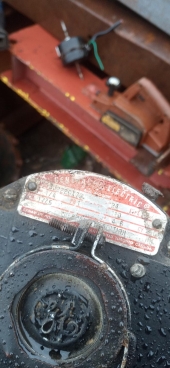




projects blog http://thekulaproject.tumblr.com








Eric Thompson wrote:It can be done, but for safety and convenience it's best to stick with a Kill-a-watt or similar device -- check the specs of competing devices to see if some are more accurate. The longer left plugged in, the more accurate it should be.
projects blog http://thekulaproject.tumblr.com












"You must be the change you want to see in the world." "First they ignore you, then they laugh at you, then they fight you, then you win." --Mahatma Gandhi
"Preach the Gospel always, and if necessary, use words." --Francis of Assisi.
"Family farms work when the whole family works the farm." -- Adam Klaus




R Scott wrote:You can't put an amp clamp around a standard cord, you will get a reading pretty close to zero--as the power goes out on the white wire, it is coming back on the black and cancel each other out. They work on a single wire at a time only. So you either have to open up the breaker box or make a split extension cord--neither of which are that safe unless you know what you are doing.




John Elliott wrote:
R Scott wrote:You can't put an amp clamp around a standard cord, you will get a reading pretty close to zero--as the power goes out on the white wire, it is coming back on the black and cancel each other out. They work on a single wire at a time only. So you either have to open up the breaker box or make a split extension cord--neither of which are that safe unless you know what you are doing.
True, but easier to do in Estonia with their Soviet style 220v outlets. It's like the old days here in the States with ungrounded zip cords. All you have to do is slit the cord so that you can get the amp-clamp around just one wire.
projects blog http://thekulaproject.tumblr.com




"If you want to save the environment, build a city worth living in." - Wendell Berry




"If you want to save the environment, build a city worth living in." - Wendell Berry




Rob Irish wrote:Hi there,
I want to measure the watts of appliances, like my computer and see if I can increase efficiency and reduce consumption.
I see there are devices like Kill-a-watt, which you can just plug the socket into and this gives out a reading. From what I've read, these are accurate to 5%, then give or take 10w. So if a reading is 180w, it could actually be 161-199w, which isn't very accurate. That is my understanding anyways of the accuracy of these simple devices and as a complete novice I could have misunderstood what I've read.
What I'd like to know is if it is possible to do this sort of measurement with a Multimeter, perhaps just by wiring the multimeter to the head of the power chord, then plugging it in and measuring the current of Amps. Then amps * voltage = watts?

 or current loops ).
or current loops ).

|
When it is used for evil, then watch out! When it is used for good, then things are much nicer. Like this tiny ad:
Learn Permaculture through a little hard work
https://wheaton-labs.com/bootcamp
|


